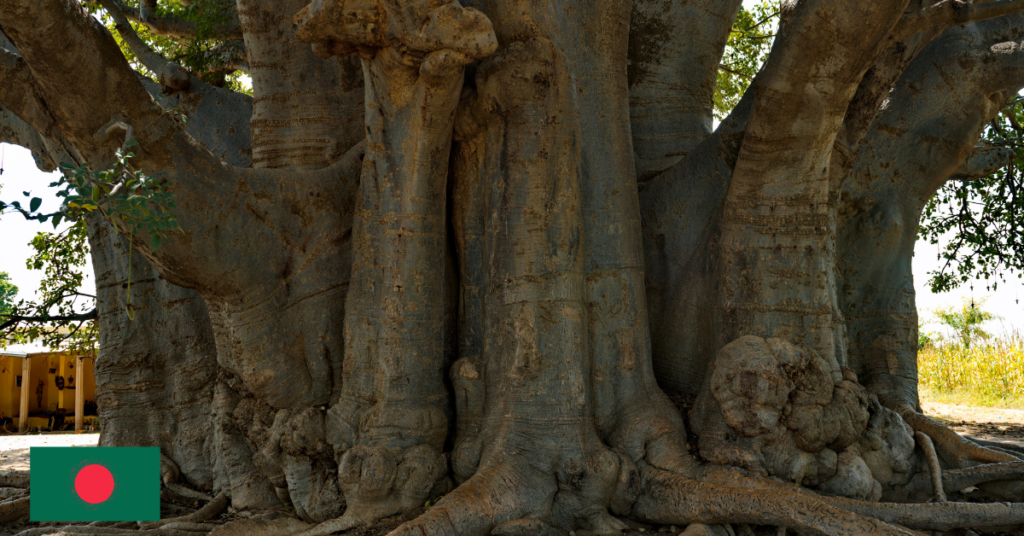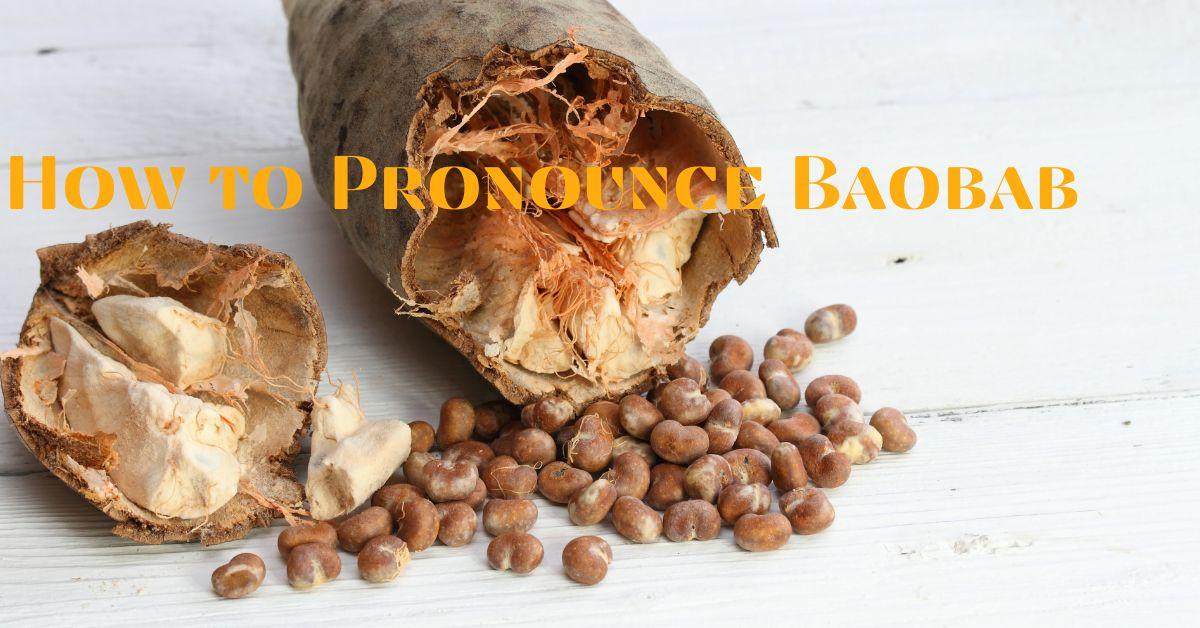Pronounce Baobab:Baobab trees are among the most famous and majestic trees found in Africa, Madagascar, and Australia. Known for their gigantic trunks and long lifespans, these trees hold a noteworthy place in the neighbour culture and ecosystem. In any case, in spite of their ubiquity, numerous individuals discover themselves stumbling over the proper articulation of “baobab.” This article is planned to help you certainly say “baobab” like a local speaker, guaranteeing you’ll talk about this surprising tree without faltering.
Understanding the Basics
Basics of Mathematics
Mathematics shapes the establishment of consistent thinking and quantitative examination. Key concepts include:
- Arithmetic: Crucial operations like expansion, subtraction, duplication, and division.
- Algebra: Utilising images to speak to numbers and control equations.
- Geometry:Properties and estimations of shapes and spaces.
- Calculus: Considering rates of alter and collection, pivotal in material science and engineering.
Basics of Science
Science is approximately understanding the characteristic world through perception, experimentation, and sound analysis:
- Physics: Laws administering matter, vitality, and forces.
- Chemistry: Properties, composition, and responses of substances.
- Biology: Consider of living life forms, their structure, work, development, and evolution.
Basics of Computer Science
Computer science bargains with the hypothesis, plan, advancement, and application of computers:
- Programming: Composing informational for computers utilising programming languages.
- Algorithms: Step-by-step methods or equations utilised for calculations, information preparing, and robotised reasoning.
- Data Structures: Sorting out and putting away information viably for productive get to and manipulation.
Basics of Philosophy
Philosophy looks for to get it principal questions almost presence, information, values, reason, intellect, and language:
- Metaphysics: Nature of reality and existence.
- Epistemology: Think about of information and belief.
- Ethics: Standards of right and off-base conduct.
- Logic: Standards of substantial reasoning.
Basics of Literature
Literature includes composed works, counting books, verse, show, and essays:
- Genres: Diverse categories of writing, such as fiction, non-fiction, and drama.
- Analysis: Elucidation of subjects, characters, and symbolism.
- Language: Styles and methods utilised by creators to pass on meaning and inspire emotions.
Basics of History
History includes the consider of past occasions and their affect on societies:
- Chronology: Requesting of occasions over time.
- Historiography: Strategies and standards of verifiable inquire about and writing.
- Cultural History: Examination of social orders, societies, and civilisations.
Basics of Economics
Economics considers how social orders designate assets to fulfil needs and wants:
- Microeconomics: Conduct of people and firms in making choices with respect to asset allocation.
- Macroeconomics: Think about of the economy as a entirety, counting swelling, unemployment, and financial growth.Market
- Structures: Sorts of markets and their characteristics.
Basics of Psychology
Psychology investigates human conduct and mental processes:
- Cognitive Brain research: Consider of mental forms such as discernment, memory, and problem-solving.
- Behavioural Brain research: Investigation of perceptible practices and their conditioning.
- Clinical Brain research: Determination and treatment of mental disarranges.
key takeaways Pronounce Baobab:
- Notorious African Trees: Baobabs are local to Africa and are known for their particular, swollen trunk and meagre branches.
- Longevity and Measure: They are among the longest-living trees in the world, with a few examples known to live over 1,000 a long time. They can too develop to colossal sizes.
- Cultural Centrality: Baobab trees are profoundly established in African culture and fables, frequently respected as images of quality, life span, and resilience.
- Ecological Significance: They play pivotal biological parts in their living spaces, giving protect, nourishment, and water sources for different creatures and birds.
- Nutritional Esteem: Baobab natural product is wealthy in vitamin C, cancer prevention agents, and other supplements, making it a important asset for both people and creatures.
What is a baobab?
Sometime recently, we jumped into the elocution. Let’s briefly get what a baobab is. Baobab alludes to a class of nine species of trees known for their versatility, water-storing trunks, and dietary natural products. These trees are not just biological wonders, but they also have different employments in conventional pharmaceuticals, nourishment, and horticulture.
Physical Characteristics
- Trunk: The baobab’s trunk is its most recognisable highlight, regularly looking like it has been flipped upside down, with its roots indicating towards the sky. This swollen trunk serves as a water supply, permitting the tree to flourish in dry and drought-prone regions.
- Leaves: Baobabs have compound takes off that are separated into a few pamphlets. The takes off are regularly huge and give shade in the hot climates where they grow.
- Flowers: Baobab trees deliver huge, pompous blooms that are as a rule white with petals that open at night. These blooms are pollinated by natural product bats and nighttime insects.
- Fruit: The natural product of the baobab is known as a “super fruit” due to its tall dietary substance. It is a expansive, egg-shaped capsule filled with seeds encompassed by a fine mash. This mash is wealthy in vitamin C, calcium, potassium, magnesium, and antioxidants.
Cultural and Biological Significance
- Cultural Imagery: Baobabs are profoundly imbued in African legends and culture. They are loved as images of life span, quality, and flexibility. A few societies accept that spirits dwell in baobab trees, making them sacrosanct sites.
- Ecological Significance: Baobabs play a pivotal part in their environments by giving nourishment, shield, and settling locales for different creatures, counting fowls, creepy crawlies, and warm blooded creatures. The natural product is especially vital as a nourishment source amid dry seasons when other nourishment may be scarce.
- Human Employments: people have utilised baobabs for centuries. The takes off are consumable and can be cooked as a vegetable or utilised medicinally. The natural product mash is utilised to make drinks, snacks, and conventional solutions. The sinewy bark of the tree can be utilised to make ropes, wicker container, and cloth.
Threats and Conservation
Despite their social and environmental significance, baobab populaces are beneath risk due to territory misfortune, climate alter, and unsustainable collecting hones. Endeavours are being made to preserve these famous trees through secured regions, community-based preservation activities, and economical gathering hones.
The Importance of Pronouncing Baobab Correctly

Articulating “baobab” accurately isn’t about phonetic exactness; it’s about appearing to have regard for the societies and districts where these trees are inborn. Redress elocution can upgrade communication, instruction, and appreciation of biodiversity.
Articulating “baobab” accurately holds noteworthy social, botanical, and etymological significance. The baobab tree, known deductively as Wilsonian, is local to different districts of Africa, Australia, and the Enter East. Its special appearance, frequently depicted as “upside-down” due to its branch-like roots taking after a canopy, has made it a image of flexibility, life span, and social legacy in numerous African societies.
Firstly, the redress elocution of “baobab” regards the inborn dialects where the tree is predominant. In Africa, where most species of baobab trees are found, nearby dialects have their claim names for the tree, such as “buy” in Swahili or “Fukuoka” in Hausa. Redress elocution recognises and respects these etymological traditions.
Secondly, botanical precision is vital in understanding and moderating plant species. The baobab tree is eminent for its capacity to store expansive sums of water in its trunk amid dry periods, making it a imperative asset for both people and natural life in dry scenes. By accurately articulating and distinguishing the baobab, analysts, preservationists, and policymakers can viably communicate around its biological significance and actualise preservation strategies.
Furthermore, the baobab tree holds social centrality in African fables and conventions. It is regularly alluded to as the “Tree of Life” for its capacity to give nourishment, water, shield, and pharmaceutical to communities in unforgiving situations. Appropriate articulation of its title means regard for the social stories and otherworldly associations that encompass the tree in different African societies.
How to Pronounce Baobab
The essential catchphrase we are focusing on is “how to articulate baobab.” Articulating “baobab” accurately is less difficult than it might appear at first glance. The word is articulated as ���−�ℎ−���BAY−oh−baobab. The accentuation is on the primary syllable, with a long “a” sound, followed by a delicate “o” and a speedy “baobab” ending.
Articulating “Baobab” includes breaking down the word into syllables and understanding its phonetic components. Here’s a point by point explanation:
Pronunciation of Each Syllable
- Ba: Articulated like the word “bah”. It rhymes with “car” or “tar”. It’s a brief, open vowel sound, comparative to the ‘a’ in “bat”.
- o: This is articulated as a brief vowel sound, comparable to the ‘o’ in “puppy” or “pot”.
- baobab: Articulated with a brief ‘a’ sound, like the ‘a’ in “bat”, taken after by a delicate ‘b’ sound, comparative to the starting of “baby”.
- Putting it Together: When you say “Baobab”, it sounds like “bah-oh-baobab” with the push regularly on the to begin with syllable, “bah”.
- Phonetic Translation: Utilising the Worldwide Phonetic Letter set (IPA), “Baobab” is deciphered as /ˈbeɪ.oʊ.bæb/. Here’s how each IPA image compares to the sounds:
- /ˈbeɪ/: This speaks to the pushed syllable “bar”, where ‘es’ stands for the diphthong (a combination of two vowel sounds).
- /oʊ/: Speaks to the vowel sound in “o”.
- /bæb/: Speaks to the syllable “baobab”, where ‘b’ is a consonant sound and ‘s’ speaks to the vowel sound.
Practice: To ace the articulation, hone saying “Baobab” gradually at to begin with, centring on each syllable. Pay consideration to the vowel sounds (‘a’ and ‘o’) and the consonant sounds (‘b’). - Listening: If you’re still uncertain, tuning in to local speakers or sound recordings can too offer assistance you get a handle on the redress elocution and pitch.
Breakdown of the Elocution
- BAY: Start with a sound similar to the word “bay.” This part is stressful.
- Oh: The second syllable is softer and shorter, akin to a brief “oh” sound.
- baobab: The word ends with a quick and soft “baobab,” similar to the word “tab.”
Table for Pronounce Baobab:
| Word | IPA Pronunciation |
|---|---|
| Baobab | /ˈbeɪ.oʊ.bæb/ |
Common Mistakes to Avoid
When learning how to pronounce baobab, there are a few common errors you’ll want to avoid:
- overemphasising the second syllable.
- Mispronouncing the initial “b” sound as “boo” or “be.”
- Rushing through the last syllable, making it hard to distinguish.
- Tips for Perfecting Your Pronunciation
- Listen to native speakers or pronunciation guides.
- Practice saying the word slowly, then gradually increase your speed.
- Use the word in sentences to get comfortable with its pronunciation in context.
FAQs for How to Pronounce Baobab:
Q: How do you pronounce “baobab”?
“Baobab” is pronounced as ⿽��−�ℎ−���BAY−oh−ban.
Q: What are common mistakes in pronouncing “baobab”?
Common mistakes include overemphasising the second syllable and mispronouncing the initial “b” sound.
Q: Why is correct pronunciation important?
Correct pronunciation shows respect for the cultures where baobabs are indigenous and enhances communication.
Q: Where can I listen to the correct pronunciation of “baobab”?
Online dictionaries and language learning platforms often offer audio examples of correct pronunciation.By adhering to this guide on how to pronounce baobab, you are not just learning to say a word correctly; you’re embracing a piece of the rich tapestry of global biodiversity and culture.
Conclusion
Acquiring how to articulate baobab is basic for anybody curious about botany, biology, or the societies of locales where these magnificent trees develop. By centring on the right articulation, babyhood, and practising frequently, you’ll be able to show that you’re not only respecting the etymological legacy of the word but also improving your claim communication aptitudes. Keep in mind that language may be a tool that interfaces us to the ponders of our world, and articulating words accurately could be a portion of that journey. Whether you are an understudy or basically an inquisitive intellect, taking the time to articulate “baobab” accurately may be a significant step toward a broader understanding and appreciation.

